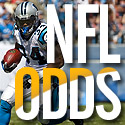To tank or not to tank
04/04/2007
Paulsen Home / Sports Channel / Bullz-Eye Home
It’s that time of year again. Every April, several NBA franchises find themselves in a difficult position. These teams are effectively or mathematically eliminated from the playoffs and every win from now through the end of the season hurts their chances of landing a top-three pick in the draft lottery. This year’s draft is especially enticing with the possibility that freshman phenoms Greg Oden and Kevin Durant will declare their eligibility in the next few weeks.
Conspiracy theorists are convinced that teams are intentionally tanking games to give themselves a better shot in the lottery. At times, this is a tough theory to debunk. Take Boston’s decision a few weeks ago to not play any of their starters in the fourth quarter as they blew an 18-point fourth quarter lead to ultimately lose to the Charlotte Bobcats. Or how about Milwaukee’s decision to shut Andrew Bogut and Charlie Villanueva down for the season? While it’s probably true that both players could have played through their injuries, why would a franchise risk serious long-term injury to two of their stars when the playoffs are no longer a possibility? And the Bucks aren’t the only team sitting their stars. Seattle decided to shut down Ray Allen and it doesn’t look like Atlanta’s Joe Johnson is going to come back this season, either.
There’s a big difference between intentionally losing games and making it as difficult as possible to win. Doc Rivers didn’t tell his five reserves to go out and lose the game, but he had to know that he wasn’t giving his team the best chance to win. But that begs the question -- is he required to do so? Isn’t it the prerogative of each franchise to determine the best course of action? I know there are fans in Boston that are rooting for the Celtics to lose so that their lottery chances are enhanced, so if that’s the case, aren’t Danny Ainge and company just plotting the best course of action for their franchise?
ESPN’s John Hollinger did an analysis of how much tanking can help a team’s chances in the draft lottery and found that losing an extra five games can increase the chances of a team landing the first- or second-overall pick by as much as seven percentage points. He goes on to argue that even if a team lands the first overall pick, there’s no guarantee that they’ll end up with the best player in the draft, so it’s not worth the trouble.
This is theoretically true, but let’s go a step further. Since it takes a few years to judge a draft accurately (allowing time for players to develop), let’s look at the 1995 through 2004 drafts. I went through the first 14 picks of each draft and graded each player as a superstar, star, starter, serviceable or bust. This is similar to the set of classifications I used for a previous column about the success of high school players in the NBA. Here’s what I found:
| Superstar | Star | Starter | Serviceable & Bust |
|
| Picks 1-5 | 10 (20%) | 17 (34%) | 12 (24%) | 11 (22%) |
| Picks 6-14 | 6 (7%) | 9 (10%) | 22 (24%) | 53 (59%) |
So, between 1995 and 2004, 10 superstars were drafted with one of the first five picks, which represents 20% (10/50) of the total number of picks over that span. Compare that to the six superstars (7%) that were picked in the #6 to #14 range, and it works out to be about three times as likely that a team will draft a superstar if they are able to secure a top-five pick. That three-to-one ratio also holds true for the chances of drafting a star. Overall, a team has a 54% chance of drafting a star or superstar if they pick in the top five compared to just 17% if they draft later in the lottery.
So while it’s true that tanking games in no way guarantees a positive outcome in the draft, it certainly helps a team’s chances if they can tank their way into a top-five pick.
Here’s a look at the current standings of the seven-worst teams and the chances of each to land each of the top-three picks if the season ended today:
| Team | # of Ping Pong Balls | 1st Pick Likelihood | 2nd Pick Likelihood | 3rd Pick Likelihood | Top-3 Likelihood |
| Memphis (19-57) | 250 | 25.0% | 21.6% | 17.8% | 64.4% |
| Boston (23-50) | 199 | 19.9% | 18.8% | 17.0% | 55.7% |
| Milwaukee (25-48) | 156 | 15.6% | 15.8% | 15.4% | 46.8% |
| Atlanta (27-47) | 119 | 11.9% | 12.6% | 13.3% | 37.7% |
| Charlotte (29-46) | 88 | 8.8% | 9.7% | 10.6% | 29.1% |
| Philadelphia (29-44) | 63 | 6.3% | 7.1% | 8.1% | 21.5% |
| Portland (29-44) | 43 | 4.3% | 5.7% | 6.1% | 16.1% |
With a six-game “lead” in the loss column and only seven games to play, it looks like the Grizzlies are on their way to the worst record and a 64.4% chance of landing a top-three pick. The Bucks still have to play the Hawks and Celtics twice, while the C’s and Hawks square off one more time before the season ends. Getting the second-worst record is important because that guarantees a team a top-five pick. (The first three picks are determined by lottery and then the remaining picks are distributed according to record.)
It’s likely that David Stern and the rest of NBA brass are just sitting tight hoping that none of these teams tank so obviously that it creates uproar they can’t ignore. Houston head coach Jeff Van Gundy recently suggested going to an even lottery system where every team in the league would have the same opportunity for the first pick. While this would certainly reduce (or eliminate) the amount of tanking going on in late March and April, it wouldn’t provide the parity that the NBA so desperately wants.
The only logical option would be to give every lottery team an equal chance at the top pick, which would completely eliminate the motivation for tanking. But over time, as more and more borderline playoff teams get high draft picks, parity would be reduced. So the league has to ask itself, what’s more important –- eliminating potential tanking or maximizing parity?
Thus far, the NBA has chosen the latter.
Questions or comments? Send them to jpaulsen@bullz-eye.com.






